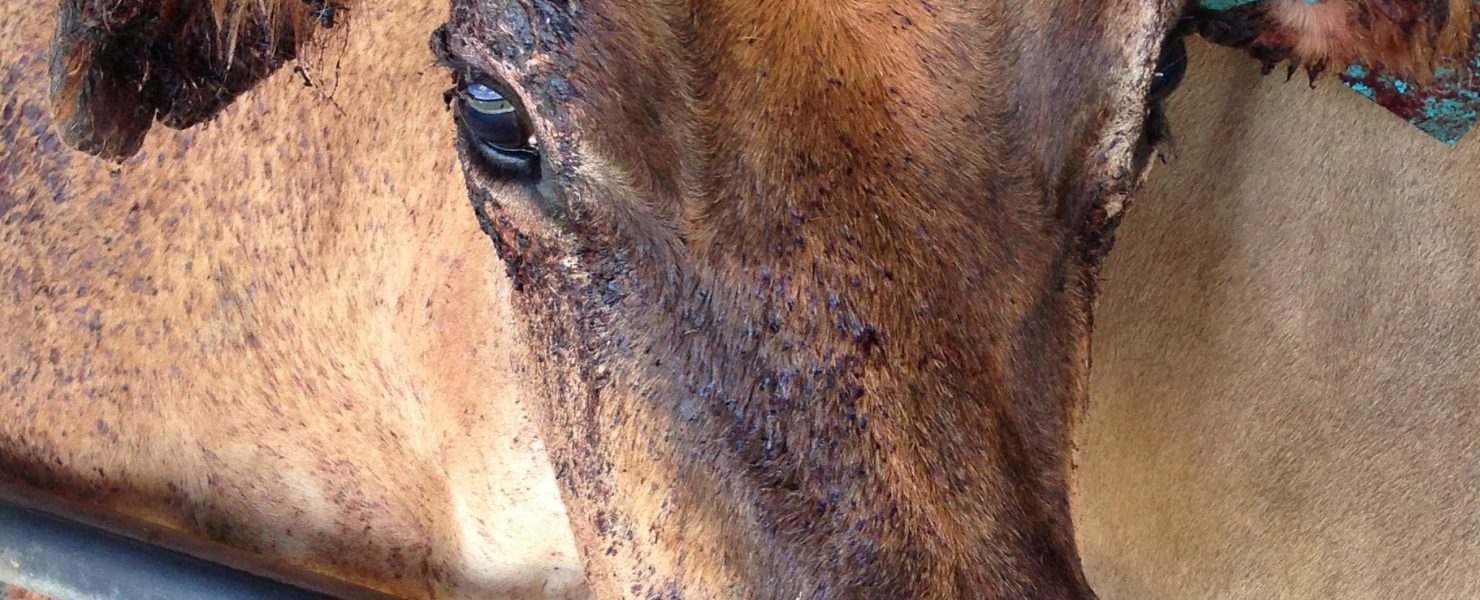
Facial eczema (FE) is caused by a fungus called Pithomyces chartarum that resides at the base of pasture in the dead litter. Moderate levels of moisture, warmth and sunlight trigger this fungus to produce spores, and when these spores are ingested, a toxin called sporidesmin is released and absorbed into the bloodstream.
Due to the damage that this toxin causes to the liver and bile ducts, the liver cannot rid the body of wastes, and a breakdown product of chlorophyll accumulates and is transported from the liver to other tissues. Where this compound is close to the skin and exposed to sunlight it results in photosensitisation (e.g. skin inflammation, swelling, skin necrosis +/- sloughing).
There are a few options for preventing facial eczema including:
However, the risk of facial eczema is constantly changing and one of the most useful tools for preventing facial eczema is to monitor the spore counts throughout the risk period. Every farm can have different spore counts due to differences in their farming systems, and monitoring spore counts allows the prediction of danger periods which can help with management decisions.
Animals with signs of facial eczema need immediate attention, below are some recommendations.
Over the past decade here in Marlborough, facial eczema has always been on the radar but not at an alarming level. After a bad season in 2008, it settled back down and had not reared its head since. However, during the 2021-22 season, facial eczema came back with a vengeance with multiple clinical outbreaks spread across 5 areas within the Marlborough region, spanning over 70km.
Facial eczema can range in severity, however, the most common signs noticed on farm were:
Treatment of clinical cases was prompt and efficient with 2 options carried out last season. Mild cases received symptomatic and supportive treatment while moderate to severe cases were dried off early. Despite zinc dosing, either through the water supply or in shed feeding, facial eczema has still managed to track us down. As we go forward, and the Marlborough climate continues to change, it is likely that zinc boluses may become a more reliable form of prevention.
Over the last couple of seasons, our clinic has worked alongside the local vet club to carry out monitoring through the region. Although this provides an average spore count every fortnight, there are a lot of external factors that can alter individual farming systems (e.g. non-irrigated vs. irrigated pasture, amount of dead litter at the base of the pasture, topped paddocks vs. non-topped paddocks, topography of paddocks or hillsides).
If you are concerned that you might have facial eczema in your livestock please contact your veterinarian to discuss. You can also explore how much FE could be costing you with this helpful online calculator.